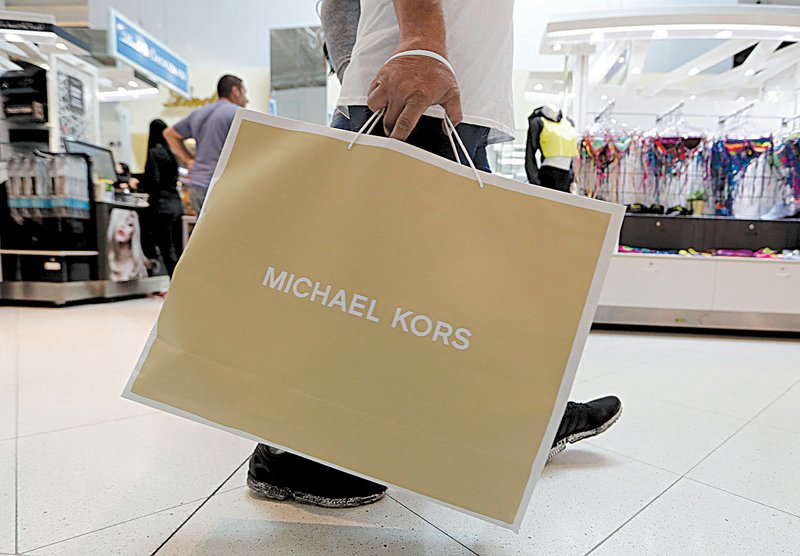WASHINGTON -- U.S. retail sales increased a slight 0.2 percent in November, as strong sales tied to holiday shopping were offset by lower gasoline prices.
Excluding gasoline, however, the Commerce Department said Friday that last month's retail sales rose a healthy 0.5 percent in a positive sign for economic growth.
Retail sales have climbed a solid 5.3 percent so far this year. In November, nonstore retail sales -- a category that includes Internet brands such as Amazon -- jumped 2.3 percent. Furniture stores, electronics stores and health stores also enjoyed a solid bump as the holiday shopping season went into full swing.
"U.S. consumers were feeling festive a month before the holidays," said Jennifer Lee, a senior economist at BMO Capital Markets.
Americans have responded to an improvement in economic growth this year by spending more, especially online and at restaurants. Retail sales are an indicator that Americans have faith that the economy with a half-century-low unemployment rate of 3.7 percent will continue to grow. Yet the economic gains of the past year -- buoyed by President Donald Trump's tax cuts -- have not insulated retailers from broader long-term pressures. Sales at department stores have slipped compared with last year, while sales gains for automakers have been weak. General Motors recently announced layoffs for thousands of workers.
In November, gas stations trimmed retail sales. Service stations had a 2.3 percent drop in purchases last month. This was a reversal from October when higher gas prices, along with a short-lived bump in auto-buying, had helped propel broader retail sales gains of 1.1 percent.
The average U.S. price of regular-grade gasoline has plummeted 22 cents a gallon over the past three weeks, to $2.51.
Those lower gas prices may have led Americans to spend more on themselves, or friends and family.
"The kick from the tax cuts is gone, but the huge and rapid drop in retail gas prices is freeing a great deal of cash at just the right time for retailers," said Ian Shepherdson, chief economist at Pantheon Macroeconomics.
Besides nonstore retailers, the gains were fueled by a 1.2 percent increase in purchases at furniture stores and a 1.4 percent growth in sales at electronics and appliance stores.
Core sales, which exclude autos, gas and building materials, have increased over the past two months at the fastest pace in two years, a reassuring sign for economic growth coming into the end of 2018.
"It unquestionably points to a consumer that continues to be upbeat and happy to spend money," said Ward McCarthy, chief financial economist for Jefferies LLC.
Consumption in the fourth quarter will "again be very strong and a source of growth," he said. "Once we move past this, we're not going to see consumer spending quite as strong, but consumer fundamentals are really good."
Factory output was unchanged last month while the prior month's reading was revised to a decline from a gain, Federal Reserve data showed Friday. The results missed the Bloomberg survey median forecast for a 0.3 percent gain. Total industrial production increased 0.6 percent, helped by growth in mining and a cold-weather boost to utilities.
Overall industrial production is up 3.9 percent from November 2017.
But manufacturing was flat in November after falling 0.1 percent in October. Factories are contending with a stronger dollar that makes their products more expensive in foreign markets, slowing global growth and import taxes that raise their costs.
While the economy's pace is still projected to moderate in the final three months of the year from 3.5 percent in the third quarter, retail sales alleviated some concerns that growth is weakening even more.
Even so, a gauge of expectations for a U.S. recession in the next 12 months has increased to 20 percent from 15 percent in November, a Dec. 7-13 Bloomberg survey of economists showed on Friday. The last reading at that level was in mid-2017.
The retail sales gain also reinforces traders' bets that the Federal Reserve will lift interest rates next week for the fourth time this year. The figures may support the case for further tightening in 2019 after investors and economists marked down their projected paths for borrowing costs. While retail sales were robust, they only account for less than half of total household purchases.
Outside the U.S., signs of cooling continue to mount: Data from China earlier Friday showed the world's second-largest economy slowed again in November. Industrial production growth decelerated to 5.4 percent from a year earlier, below all 38 economists' estimates. Retail sales rose 8.1 percent from a year earlier, the slowest pace since 2003.
Information for this article was contributed by Josh Boak and Paul Wiseman of The Associated Press and by Katia Dmitrieva, Shobhana Chandra, Chris Middleton and Catarina Saraiva of Bloomberg News.
Business on 12/15/2018
